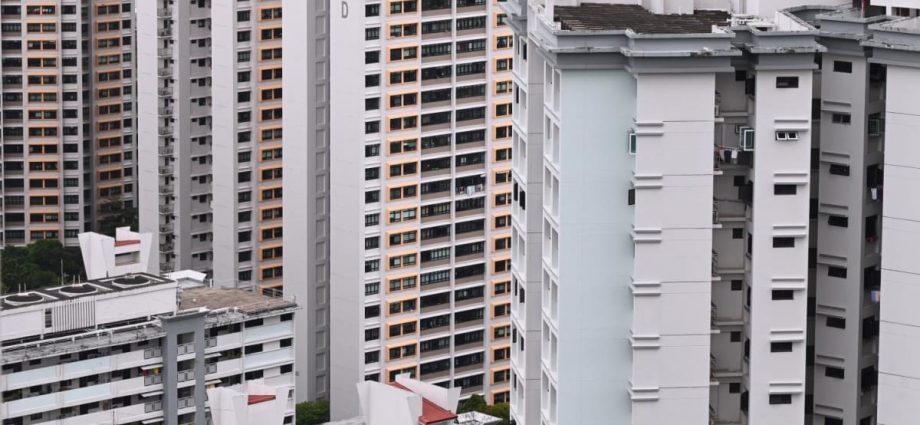
WHY ARE THE CHANGES NECESSARY?
That people are forking out “eye-watering” amounts for public housing was a key consideration in implementing the new measures, noted Christine Sun, senior vice-president of research and analytics at real estate agency OrangeTee & Tie.
With more flats across the island fetching record prices and more transactions crossing S$800,000, some buyers may already be overstretching their finances, she added.
“The adjustment of the MSR will have an impact on buyers’ housing affordability. With more stringent TDSR and MSR, buyers will have to pay more cash as they can only take fewer loans,” said Ms Sun.
“This will have a knock-on effect on moderating housing demand and the pace of price growth.”
Mohan Sandrasegeran, senior analyst of research and content creation at One Global Group, said the stricter loan limits represent a “proactive” approach to ensure the impact of borrowing costs for home purchases are taken into consideration for the long-term.
It also takes into account further increases in interest rates, influenced by global market movements, he said.
“The further tightening of the loan quantum limits for HDB housing loans will encourage greater financial prudence among buyers,” said Mr Sandrasegeran.
“It is crucial to maintain a check and balance through these measures in order to reduce excessive price increases and ‘overheating’ in the public housing market.”
Catherine He, director and head of research for Singapore at Colliers, said that amid the “double whammy” of a steep rise in interest rates and higher cost of living, the new measures are “timely and well-calibrated” and will “instil discipline and prevent buyers from overleveraging”.
She believes the adjustments to loan limits also protects a public who might be unaware that an impending era of higher interest rates will be “very different” from the long period of low interest rates enjoyed from 2013 to 2021.
This will have a “sizeable” impact on their finances should they overextend on housing loans, Ms He warned.
“This adjustment is also necessary, as with three-month SORA (Singapore Overnight Rate Average) nearing 2 per cent and mortgage rates around 3 per cent, it is likely the previous floor of 3.5 per cent for residential and 4.5 per cent for non-residential properties will soon be breached,” she added.
HOW ARE PRIVATE PROPERTY BUYERS AFFECTED?
On how the revised loan limits will affect the private residential market, CBRE’s head of research for Southeast Asia Tricia Song, noted that the increase in interest rate floor for TDSR was “widely expected and not a surprise”.
“Interest rates have been rising and most fixed-rate mortgage packages have exceeded 3 per cent,” she explained.
“Based on our calculations, assuming a 20- and 30-year loan term, a 0.5 percentage point increase of interest rate floor for TDSR will reduce the maximum allowable loan and property price by 4.3 and 5.9 per cent respectively, regardless of LTV levels and income.”
Analysts also illustrated how the loans would affect different individuals depending on their income.
For the private property market where S$2 million home price quantums are “increasingly common”, affordability will “undoubtedly” be impacted – even in the suburban segment, said Lam Chern Woon, head of research and consulting at Edmund Tie.
Mr Lam outlined how a S$1.5 million loan with a 30-year tenure would now require a higher monthly income of about S$13,000 compared to S$12,200 previously. This assumes the individual has no other debt obligations.
“Meanwhile, a household with a monthly income of about S$12,200 would now only be eligible for up to S$1.41 million loan to support a S$1.88 million property purchase, compared to S$2 million previously,” he added.
With the TDSR calculation now using a 4 per cent interest rate, the maximum loan for borrowers with a S$10,000 household income on a 30-year loan tenure will be reduced from S$1.23 million to S$1.15 million, added OrangeTee & Tie’s Ms Sun.
“Therefore, a buyer can only purchase a property up to a value of S$1.53 million instead of S$1.63 million, without an additional cash outlay.”
Colliers’ Ms He expects many buyers to be priced out of the market by the rise of the medium-term interest floor rate by 0.5 per cent, as wages are “sticky and unlikely to be adjusted quickly” despite the rising cost of living.
“For example, assuming there are no other loan obligations, (an increase in) monthly income of up to S$1,032 is needed if a buyer wants to take up a S$2 million loan for a residential property after the adjustment. Or the loan amount will have to be reduced,” she said.

